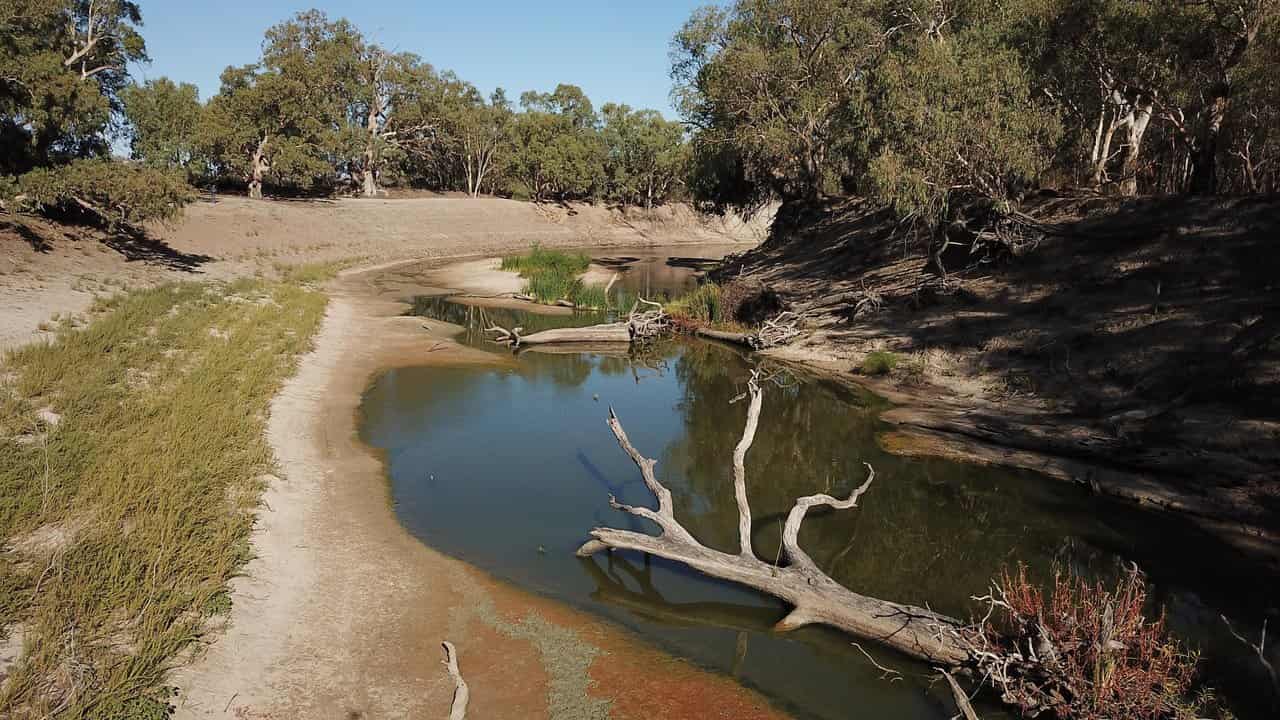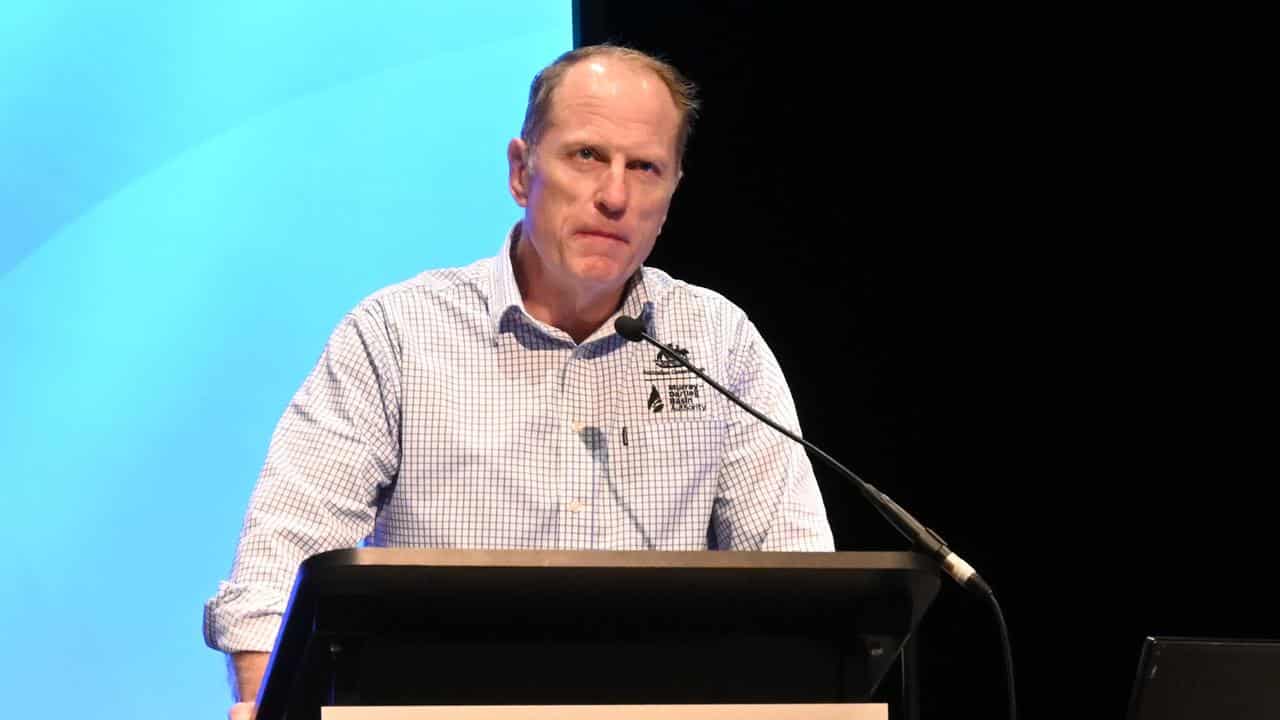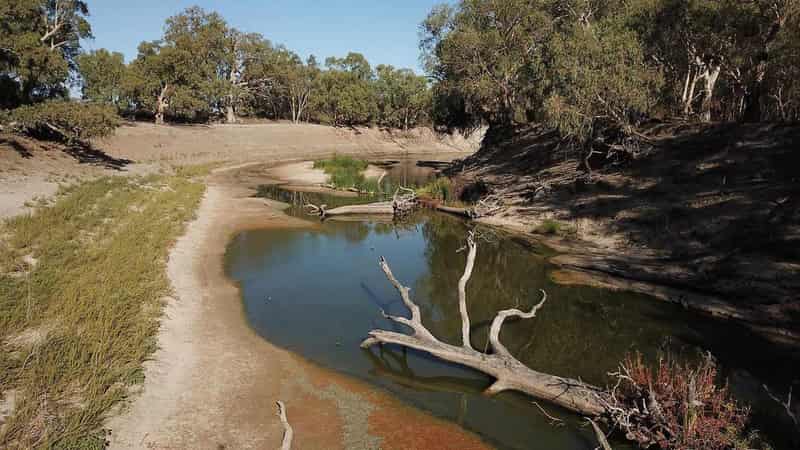
The Murray-Darling Basin Plan needs flexibility to balance the water needs of people and the environment and to prepare for a drier future for Australia's largest river system, a review has revealed.
At the Murray-Darling Basin Authority's River Reflections conference in Albury, the organisation's chair, Sir Angus Houston, noted emerging changes since the plan was signed into law in 2012.
"It is an opportunity to transition from the much-needed Basin Plan as an intervention to over-allocation during the desperate days of the millennium drought to a plan fit for the future," Sir Angus told the conference.
An early insights paper on the authority's review identified climate change, and the drier basin it could bring, posed risks to communities, first nations' objectives, the environment, employment, tourism and recreation.
The Murray-Darling Basin provides drinking water for three million Australians and contributes $45 billion to the Australian economy between agriculture and tourism alone.
The plan has delivered an annual return of 2200 gigalitres of water to the river system, well short of the eventual goal of 3200 gigalitres.
National environment department representative Rachel Connell acknowledged the plan's progress, including $11.4 billion in federal spending, but stressed more adjustments were needed.
"There is still 26 gigalitres to bridge the gap to the sustainable diversion limits," Ms Connell said.
She said a further 422 gigalitres were required to enhance environmental outcomes, and state governments had work to do on sustainable diversion limit adjustment mechanism projects.
The federal government would also offer each state $300 million to support communities impacted by voluntary water purchases, with the buybacks themselves delayed until the second half of 2024.
Sir Angus said the effect of climate change would differ on the northern and southern parts of the basin..
"We expect the southern basin will have a steady or underlying drying trend and we may already be experiencing this despite recent flooding," he said.
"In the north, the signals are less clear."
The conference brings together water users and other stakeholders from the 1400km-long basin, and the often opposing perspectives on how the water should be used.
"Nothing is more contested or more complex, in my experience, than working in water," chief executive Andrew McConville told the conference.
"That's not a responsibility that I, or my team at MDBA, take lightly."

It's two years to the day since Mr McConville's appointment by former federal water and resources minister Keith Pitt, and the authority chief reflected on advice from the former minister.
"He said, 'if everyone disagrees with you and hates you in equal measure by the time you finish, you've done a good job'."
Mr McConville pledged that any solutions offered by the authority would come from stakeholder contributions, not the organisation itself, and that its process would be transparent and fair.
"Because it's worth thinking a little bit about what's at stake: 8500 agricultural businesses in the basin, farm output of more than $30 billion a year, a tourism industry worth $15 billion a year," he said.
"And water from 23 rivers, bringing life to the environment, to wetlands, to communities, to towns over more than a million square kilometres."
The Commonwealth Environmental Water Holder Simon Banks told the conference a river and wetland restoration program is being done at a scale never seen anywhere else in the world.
He said increased flows down the full length of rivers was required to benefit wetlands, to flush salt from the river system and to slow the decline of native waterbird and fish populations.
“Our monitoring and research has revealed that significant progress has been made in the past 10 years ... but there is still an urgent need to keep going and do more," Dr Banks said.
The conference continues on Thursday.









